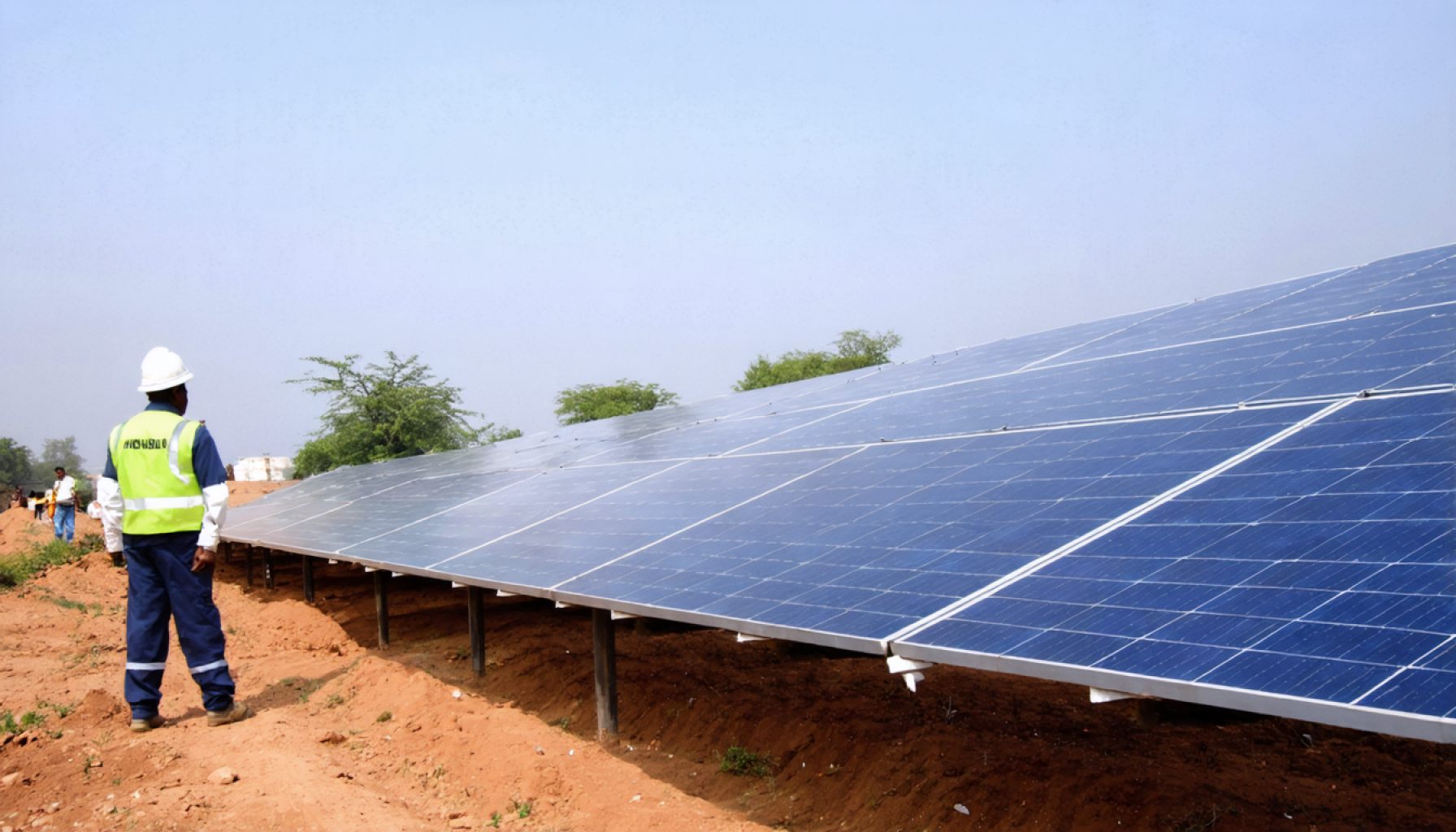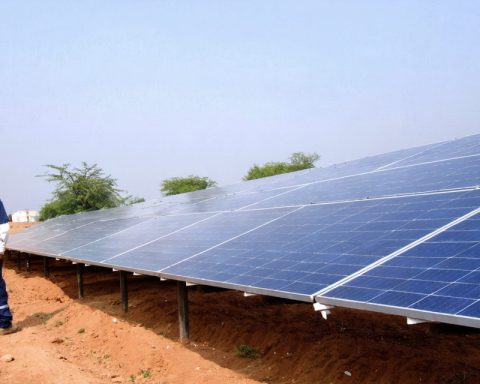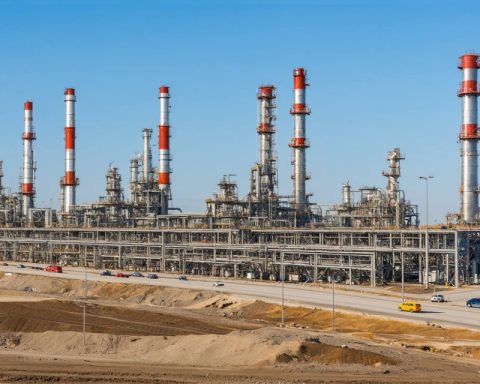- NTPC partners with Madhya Pradesh, investing over $23 billion in renewable energy projects.
- Aims to develop 20 gigawatts of renewable energy capacity, including solar, wind, and pumped-storage hydropower.
- NTPC commits $9.2 billion to non-fossil fuel power plants, highlighting a significant shift in energy strategy.
- Notable projects include an 800 MW pumped-storage hydropower plant for consistent energy supply.
- These initiatives align with India’s goal to achieve 500 gigawatts of non-fossil fuel electricity by 2030.
- The initiative marks a step towards revolutionizing energy dynamics, impacting the environment and local economy.
- NTPC’s strategy in Madhya Pradesh could serve as a model for global energy transformation.
In the heart of India, a green revolution swells as NTPC inks a transformative deal with Madhya Pradesh, promising to invigorate the state with over $23 billion in renewable energy initiatives. The vibrant landscapes of Madhya Pradesh, known for their diverse wildlife and rich history, are set to become the backdrop for a surge in sustainable power generation.
NTPC, India’s power titan, will deploy cutting-edge technology and innovation to spearhead the development of a colossal 20 gigawatts of renewable energy capacity. This isn’t merely about harnessing solar rays or capturing the mighty winds; the plan extends to integrating the intricate art of pumped-storage hydropower. These renewable ventures symbolize more than mere energy projects—they represent a pivotal shift in how energy interplay reshapes both the environment and local economies.
Madhya Pradesh stands on the cusp of an energy metamorphosis, made possible by NTPC’s commitment to splurge $9.2 billion on non-fossil fuel power plants. Among the standout projects is a mammoth 800 MW pumped-storage hydropower plant, designed to provide a steady energy pulse even when the sun sets or winds still.
Yet, this vision is not just about clean energy output. It’s a testament to India’s broader ambition, with plans to amplify nuclear infrastructure and achieve 500 gigawatts of non-fossil fuel electricity by 2030. The sun-drenched plains and breezy plateaus of Madhya Pradesh might soon echo the hum of turbines and the glint of solar panels.
This commitment isn’t just for pioneers in renewable energy—it’s a clarion call for a more sustainable future. As India marches towards a cleaner, greener horizon, NTPC’s robust strategy in Madhya Pradesh could chart the course for global energy transformation.
The Untold Impacts of NTPC’s $23 Billion Renewable Energy Push: What You Need to Know
How-To Steps & Life Hacks
1. Harnessing Solar and Wind Power: To truly benefit from renewable energy at a local level, communities can set up small solar panels and wind turbines, reducing reliance on centralized power.
2. Implementing Energy Storage Solutions: Learn about new battery technologies like lithium-ion and flow batteries, which are crucial for storing excess power generated during peak times.
3. Efficient Energy Use: Simple practices like using LED lighting, energy-efficient appliances, and smart meters can reduce electricity bills and support sustainable environments.
Real-World Use Cases
– Community Benefits: NTPC’s projects will potentially create thousands of jobs in installation, maintenance, and management. Communities can expect enhancements in local infrastructure and improved electricity access.
– Industry Advantages: Companies in Madhya Pradesh could experience reduced power costs and improved reliability, encouraging industrial growth and investment in the region.
Market Forecasts & Industry Trends
The Indian renewable energy sector is expected to surpass the 500 GW mark by 2030, with significant contributions from solar, wind, and hydro sectors. The global trend towards decentralizing energy production could lead to more community-owned power projects.
Reviews & Comparisons
Compared to traditional fossil fuels, renewable energy sources like solar and wind are now more cost-effective due to declining equipment costs and government incentives. NTPC’s energy initiatives place them among the leading renewable energy producers globally.
Controversies & Limitations
– Environmental Impact: While renewable, large-scale hydroelectric projects can disturb local ecosystems and communities. Rigorous Environmental Impact Assessments (EIA) are crucial.
– Intermittency Issues: The variability of solar and wind power still poses challenges; however, technologies like pumped-storage hydro can mitigate these issues.
Features, Specs & Pricing
NTPC plans include diverse energy solutions like solar panels with high-conversion efficiency and advanced wind turbines. The investment will help reduce production costs and make renewable energy more competitive with fossil fuels.
Security & Sustainability
Sustainable energy will enhance India’s energy security by reducing dependence on imported fuels. Renewable energy projects like these support low-carbon futures, aiming to reduce emissions significantly.
Insights & Predictions
Expect NTPC’s projects to serve as a model for similar initiatives worldwide, setting a benchmark for integrating various renewable technologies. India’s leadership in renewables will likely expand, influencing global energy trends.
Tutorials & Compatibility
For residents, understanding grid-connectivity and how to monitor energy consumption via smart meters will be beneficial. Compatibility of household systems with renewable grids can ensure seamless transitions.
Pros & Cons Overview
Pros:
– Significant reduction in carbon footprint.
– Job creation and economic boost.
– Enhanced energy security.
Cons:
– High initial capital investment.
– Potential environmental and social challenges.
Actionable Recommendations
– For homeowners: Explore installing solar panels or investing in local renewable projects.
– For businesses: Consider engaging in Power Purchase Agreements (PPA) to secure low-cost renewable energy.
– For policymakers: Ensure supportive regulations and financial incentives to drive renewable adoption.
In conclusion, NTPC’s renewable energy projects in Madhya Pradesh not only support India’s 2030 energy goals but may also stimulate global shifts towards more sustainable energy frameworks. For more information on India’s energy initiatives, visit the official page of NTPC.









